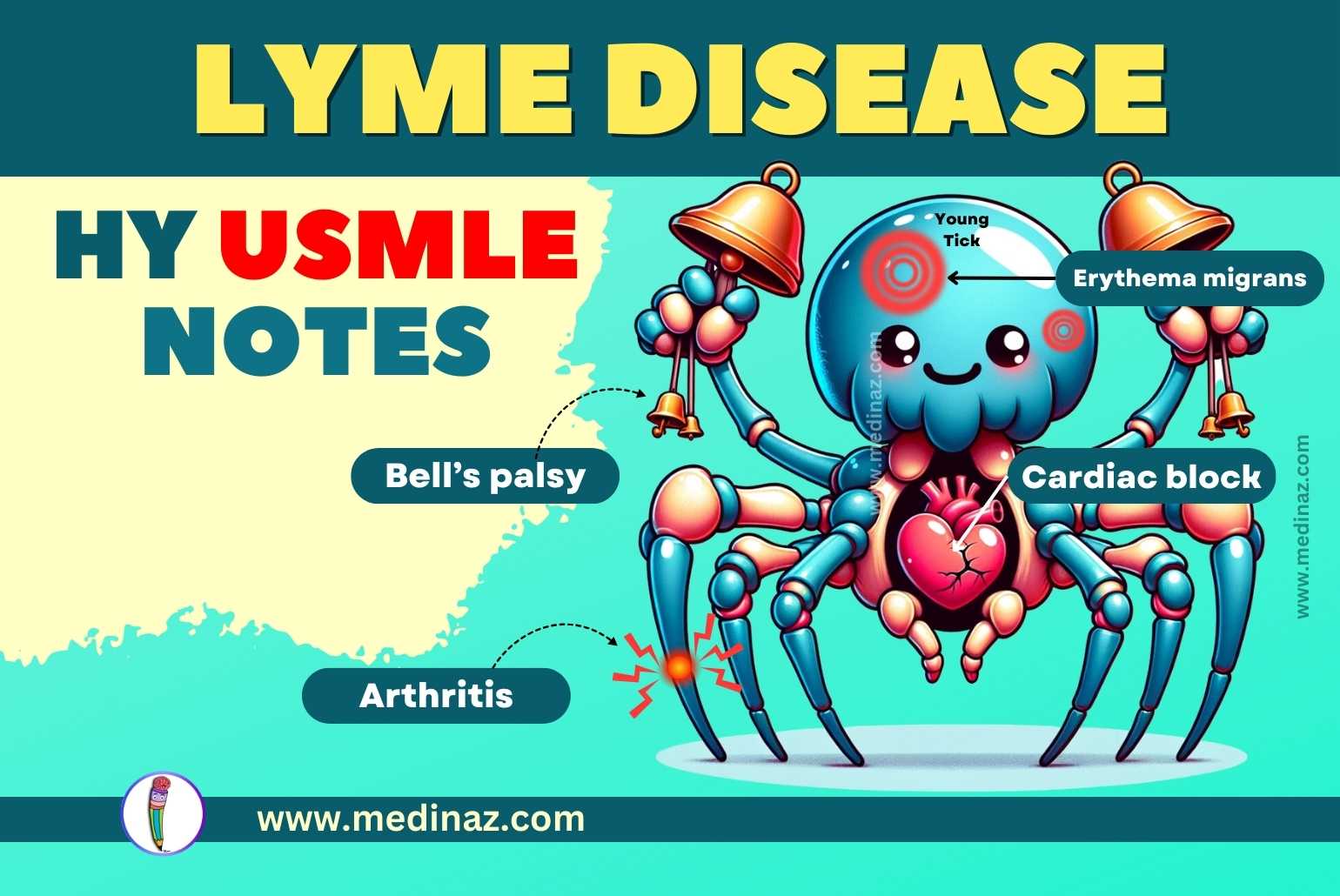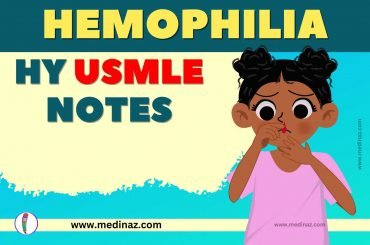Lyme Disease USMLE Notes & Mnemonics contains all the high-yield points you need to know.
Etiology:
- Causative Agent: Borrelia burgdorferi, a spirochete.
- Transmission: Ixodes tick (deer tick) bite. (Ref)
Epidemiology:
- Most common in Northeastern and upper Midwestern United States.
- Peak incidence in late spring and summer.
Clinical Stages:
- Early Localized:
- Erythema Migrans: Classic “bull’s-eye” rash, appears in ~70-80% of cases, 1-2 weeks post-tick bite.
- Flu-like symptoms: Fever, headache, fatigue, myalgias.
- Early Disseminated (days to weeks after bite):
- Multiple erythema migrans lesions.
- Neurological symptoms: Bell’s palsy, meningitis.
- Cardiac involvement: AV block, myocarditis.
- Late Disseminated (months to years later):
- Arthritis: Typically monoarticular, large joints, especially the knee.
- Neurological complications: Encephalopathy, polyneuropathy.
- Skin changes: Acrodermatitis chronica atrophicans (Europe).
Diagnosis:
- Clinical Diagnosis: Based on erythema migrans rash and exposure history.
- Serologic Testing: ELISA followed by Western blot for confirmation (in early disseminated or late disease).
- PCR: May be used in certain cases (e.g., synovial fluid).
Treatment:
- Doxycycline: First-line for most cases and stages.
- Amoxicillin or Cefuroxime: In pregnant women and children <8 years.
- IV Ceftriaxone: For severe neurological or cardiac involvement.
Prevention:
- Avoidance of tick-infested areas.
- Use of insect repellents (DEET).
- Protective clothing.
- Regular tick checks.
Lyme Disease USMLE Mnemonic: “LYME”
- Late (stage: arthritis, encephalopathy)
- Young ticks (Ixodes)
- Migrans (erythema migrans)
- Early (flu-like symptoms, Bell’s palsy)
Chart: Lyme Disease Stages and Features
| Stage | Clinical Features | Treatment |
|---|---|---|
| Early Localized | – Bull’s-eye rash (Erythema migrans) | Doxycycline |
| – Flu-like symptoms | Amoxicillin | |
| Early Disseminated | – Multiple EM lesions | Cefuroxime |
| – Neurological (Bell’s palsy) | ||
| – Cardiac (AV block) | ||
| Late Disseminated | – Monoarticular arthritis (knee) | IV Ceftriaxone (if severe) |
| – Neurological complications | ||
| – Acrodermatitis chronica atrophicans (Europe) |
Note: Lyme disease presents a range of symptoms from localized to disseminated, depending on the stage. Early recognition and treatment are essential to prevent progression to more severe manifestations. The USMLE often tests the ability to recognize erythema migrans and to know the first-line treatments for different stages of the disease.
Check other important USMLE Notes
A Visual Learning Platform





